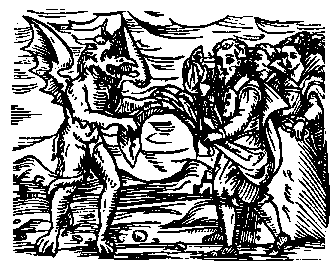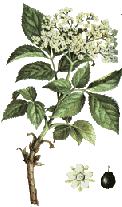By Standing Stone & Elder Tree

By Standing Stone & Elder Tree
The Meaning of the Witches’ Tree
Lady Ellhorn, give me some of thy wood
and I will give thee some of mine when it grows in the forest.
The title of this essay is taken from the book of the same name by the late William Gray, a Ceremonial magician who corresponded with Robert Cochrane in the 1960’s, and I encourage all readers to try and acquire a copy of The Rollright Ritual so that you may read descriptions of some of the most extremely potent workings that were ever put to paper. The expansive and very moving rites that took place over time at the Rollright Stones by William and his working group are written up with such fine attention to detail, and are easily considered by myself and others to be some of the most powerful rituals and mystical experiences publicly recorded.
I borrowed William’s title as I wanted to write about Our Lady Elder (Sambucus Nigra) in this essay, to share with you some of the myth and lore that surrounds one of the most alluring of the sacred trees that were honored and worked with by Witches of the past and of today as well. Dame Elder or Hylde-Moer, the Elder Tree Mother, has a most intriguing history with Witches beginning with those very same Rollright Stones.
The Witch of the Elder is a prominent figure in the lore of a certain King and his Army as they made their approach across the land of the English countryside. A Witch appeared suddenly and called out to the King — “Seven long strides shalt thou take, If Long Compton thou can see, King of England thou shalt be.” But the village of Long Compton was hidden behind a low mound known as the Archdruid’s Barrow and as the King had taken the seventh of his strides, the Witch then cried out — “As Long Compton thou canst not see, King of England thou shalt not be. Rise up stick and rise up stone, For King of England thou shalt be none. Thou and thy men hoar stones shall be and myself an Eldern-Tree.” The King thus became the single stane known as the King Stone, and The Whispering Knights are now what his men are known as, they being a group of stones positioned to the East of the King Stone while the compass or circle of the Stones themselves is now called the King’s Men with the Witch herself becoming the fabled Hyldor Tree.
The Elder is known by many various names and is used medicinally for many purposes, I’ll give a brief list of both and the diligent reader is encouraged to seek out such herbal tomes as Mrs. Grieves Modern Herbal and Culpeper’s Herbal which has a lengthy section devoted to the lore and uses of the Elder Mother. Alternate names for the Elder tree include Black Elder, Common Elder, Pipe Tree, Bore Tree, Bour Tree, (Fourteenth Century), Hylantree (Anglo-Saxon), Hylder, Hyldor, Eldrum, (Low Saxon), Ellhorn, (German) Hollunder, Sureau (French), Burtre (Anglo-Saxon).
The Elder was known as the Pipe Tree as it contained a soft and pliable pith that was easily removed, and the hollowed out elder branch was then perfect for making small flutes similar in nature to Pan flutes (the Latin name Sambucus is a derivation of a Greek word that signified a wind instrument made from Elder.) The word Elder itself stems from the Anglo-Saxon word Æld which means fire, those same hollowed out Elder branches and stems were used to fan high the flames of fires. There is a deeper mystery here as the Elder was used not only to fan flames higher and brighter but to transport the the very essence of the cunning gift of fire, and such actions will reveal hidden insights when sought out in personal musings and meditations over time.
Medicinally all parts of the Tree (actually considered a type of small bush) are used, the berries, the flowers, the leaves and even the bark. The Elder has been termed the Medicine Chest of the Country People with uses for such ailments as epilepsy, asthma (as an expectorant) and other pulmonary uses, inflammation of the eyes and general nasal stuffiness. An ointment made from elder is used for sprains, bruises and the like. A distillation of Elder is used in clearing up complexions and ridding of the effects of sunburn and even freckles! The flowers and berries are also used to make wine and teas and even vinegars with many healthful benefits. Culpepper writes that the noble Elder was even used as a hair coloring agent.
Historically the Elder is one of those paradoxical trees that has magical uses that are both beneficent to the Witch and at times of a more malevolent nature and has been used by Witches and to also dispel their very presence. The Elder has a reputation that has deep rooted connections to very sorrowful and grief filled themes, beginning with the Elder being written of the tree of death for the betrayer Judas in the book Piers Plowman, to being the tree that Jesus himself was nailed upon in the form of the cross — “Bour Tree - Bour Tree, Crooked Rong, Never Straight and Never Strong; ever Bush and Never Tree, Since our Lord was Nailed on Thee.”
Tradition had it that it was very unlucky to cut down an Elder tree or remove any branch or twig without first kneeling with head bowed low and repeating thusly — “Lady Ellhorn, give me some of thy wood and I will give thee some of mine when it grows in the forest” and even today there are those who work the land that will not cut it down, they will work round the Elder first rather than risk the wrath of the displeased spirit that is thought to dwell within the tree. Cradles or other infant furniture was never to be made from the Elder as it would have placed the infant in great danger when the Elder Mother came to reclaim her Sacred Wood.
Folklore abounds with many references to the Elder Mother (Hylde-Moer) or Elder Queen (Hylde-Vinde). The German name of the tree, Holdre (which means hollow) also has associations with Dame Hulda, Dame Holda also known as Dame Venus. From those Germanic associations and connections is where the Elder derives the abilities to drive away malevolent spirits and thwart the darker, more sorcerous arts when used in protective magical measures. Nordic myth tells the tale of Hel, who is the Queen of the Underworld, and she keeps the spirits of the dead in an Elder tree until it is time for them to be reborn. The Elder bush or tree defines the boundary between the Underworld and the Middle World. The Elder also acts as a threshold or as a gateway of sorts to that trans-sensory realm below.
Elder trees that grew next to the homes of Germans and Slavs was thought to be the home to the ancestral spirits. Thus the Elder served dual functions for spirits who were initially entering the Underworld and for those returning from their sojourn there after death. The Elder also functions in an erotic manner as witnessed in the lyrics of certain folks songs.
”Parsely, potherb, grows in my garden.
[Name of the Girl] is the Bride, she shall wait no longer.
Behind an Elder bush, she gave her love a kiss
Red wine, white wine, tomorrow she’ll be mine.”
I’ll leave you with a recipe for Elderberry Wine and hope that readers will avail themselves to further reading and folklore in regard to Dame Elder such as Hans Christian Anderson’s tale of the Little Elder Tree Mother, and that you will seek out this favored and holy Tree in the landscape of your own geographical area and pay the Dame the homage and respect that She deserves.

Elderflower Wine
Ingredients
- 3 pints Elder flowers (stems removed)
- 3 gallons water
- 10 pounds sugar
- 2 pounds raisins
- Juice of 3 oranges
- Juice of 1 lemon
- 1 package of wine yeast
Instructions
- Wash and drain elder flowers and put in primary fermentor.
- Make a syrup of water and sugar, pour it hot over elderflowers, cover and allow to cool.
- Mix orange and lemon juice with the yeast, add the liquid, cover and let stand for 10 days.
- Strain and add the raisins.
- Cover and let stand for 4 months.
- Bottle the wine and store in a dark place for 6 months before using.
Sources: Mrs. Grieves Modern Herbal, Witchcraft Medicine: Healing Arts, Shamanic Practices and Forbidden Plants, Plant Lore, Legends, and Lyrics
The Death-Child
She sits beneath the elder-tree
And sings her song so sweet,
And dreams o’er the burn that darksomely
Runs by her moonwhite feet.Her hair is dark as starless night,
Her flower-crowned face is pale,
But oh, her eyes are lit with light
Of dread ancestral bale.She sings an eerie song, so wild
With immemorial dule—
Though young and fair, Death’s mortal child
That sits by that dark pool.And oft she cries an eldritch scream,
When red with human blood
The burn becomes a crimson stream,
A wild, red, surging flood:Or shrinks, when some swift tide of tears—
The weeping of the world—
Dark eddying ‘neath man’s phantom-fears
Is o’er the red stream hurled.For hours beneath the elder-tree
She broods beside the stream;
Her dark eyes filled with mystery,
Her dark soul rapt in dream.The lapsing flow she heedeth not
Through deepest depths she scans:
Life is the shade that clouds her thought,
As Death ‘s the eclipse of man’s.Time seems but as a bitter thing
Remembered from of yore:
Yet ah (she thinks) her song she’ll sing
When Time’s long reign is o’er.Erstwhiles she bends alow to hear
What the swift water sings,
The torrent running darkly clear
With secrets of all things.And then she smiles a strange sad smile
And lets her harp lie long;
The death-waves oft may rise the while,
She greets them with no song.Few ever cross that dreary moor,
Few see that flower-crowned head;
But whoso knows that wild song’s lure
Knoweth that he is dead.— Fiona McLeod / William Sharp

